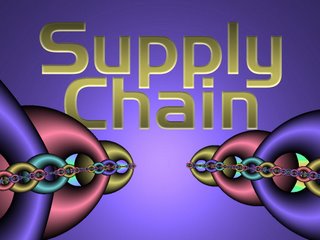Back to the Future
 If Japan can... Why can't we? was a white paper broadcast by NBC in 1980, credited with beginning the Quality Revolution and introducing the methods of W. Edwards Deming to American managers (producer: Clare Crawford-Mason [1], reporter: Lloyd Dobyns [2]). During the 1980's Japan was seen to be a manufacturing powerhouse and American Industry was struggling to keep pace. The release of the white paper showed everyone that in fact the techniques being used in Japan were espoused by an American W. Edwards Deming who had been largely ignored in American management until the white paper got everyone to sit up and listen. In the following years, it prompted a major change in the way many businesses operated. The report details how the Japanese captured the world automotive and electronics markets by following Deming's advice to practice continual improvement and think of manufacturing as a system, not as bits or pieces.
If Japan can... Why can't we? was a white paper broadcast by NBC in 1980, credited with beginning the Quality Revolution and introducing the methods of W. Edwards Deming to American managers (producer: Clare Crawford-Mason [1], reporter: Lloyd Dobyns [2]). During the 1980's Japan was seen to be a manufacturing powerhouse and American Industry was struggling to keep pace. The release of the white paper showed everyone that in fact the techniques being used in Japan were espoused by an American W. Edwards Deming who had been largely ignored in American management until the white paper got everyone to sit up and listen. In the following years, it prompted a major change in the way many businesses operated. The report details how the Japanese captured the world automotive and electronics markets by following Deming's advice to practice continual improvement and think of manufacturing as a system, not as bits or pieces.Move to 1991, Quality or Else: The Revolution in World Business, the 1991 PBS series and book, clarified the practice of the new methods. It reported that some U.S., Japanese, Korean, and European companies help employees improve themselves and thereby get their commitment to the organization's mission. This relationship was just as important as systems thinking, customer focus and databased decisions. The series also reported how this new management philosophy of continual improvement could be used to improve service, health care and educational organizations
At the same time, major companies prospered under visionary leaders into the 1990's and then slid back into old practices with corresponding loss of profitability and product/service quality.
Move to 2000 and beyond. The new era started out with the Dot.com bubble burst. Today much of the theory of "systemic thinking" have now become new initiatives with many different consultant labels. While "Quality" is still a component of major corporations the fundamentals have been loss and "Quality" has been delegated to a department rather than being practiced in the executive offices. While quality has improved in many industries its philosophy and practice at the top of organizations is no longer evident as a driving force of American competitiveness.
What are the factors that led to failure of the vital role of systems-thinking leadership?
1) Generational Changes: The leadership of many corporation, large and small, were in their 20's when Deming and his management theories appeared on the American business landscape. The leaders of the past have retired and today’s leaders have reverted back to traditional linear thinking when viewing and solving problems.
Traditional decision-making tends to involve linear cause and effect relationships. By taking a systems approach, we can see the whole complex of bidirectional interrelationships. Instead of analyzing a problem in terms of an input and an output, for example, we look at the whole system of inputs, processes, outputs, feedback, and controls. This larger picture will typically provide more useful results than traditional methods. Education of today's leadership is required to go "back to the future".
2) Management by Results: Today's manager is measured by financial results i.e. budgets, sales, headcount and other final outcomes. If the results are not what the "boss" expected then a simple resolution is to cut budgets, blame other people or hide expenses by shifting them over to other departments. This method brings no improvement rather further complexity and increased cost. What are the true numbers? Who would know?
Today's manager is also measured by monthly or quarterly results. A timing factor that does not allow a true picture as to how people, processes and customers are behaving over time.
System thinking helps us integrate the temporal dimension of any decision. Instead of looking at discrete "snapshots" at points in time, a systems methodology will allow us to see change as a continuous process. Systems’ Thinking is a worldview based on the perspective of the systems sciences, which seeks to understand interconnectedness, complexity and wholeness of components of systems in specific relationship to each other. Systems thinking is not only constructivist, rather systems thinking embraces the values of reductionism science by understanding the parts, and the constructivist perspectives which seek to understand wholes, and more so, the understanding of the complex relationships that enable 'parts' to become 'wholes'.
3) Short Term vs. Long Term emphasis: The stock market operates around quarterly results. Corporate accounting systems operate around monthly results. Many organizations are driven by their budgets, not by how to improve or innovate product and service thus increasing customer satisfaction and market share. Improvement drives down cost, creating market differential and increasing customer satisfaction drives up sales. Short-term thinking does not enable either to happen effectively.
4) Politics: Many colleges still teach organizational design by breaking the organizational 'whole' into components, calling them functions and departments, 'strengthen' each of these components, and hope that together they will produce the whole. We have seen many "unintended" but "logical” consequences of this approach in many organizations. One of them was that the departments conflicted with each other to such an extent that "internal politics" has become the cultural norm.
The Political factor drives many employees to focus on "how to keep in good standing" with their immediate boss. Never questioning his/her methods, always learning to give the "politically correct answers" rather than simply speaking the truths. Political factors are a dominant cultural trait of organizations that manage by results.
There are many other factors that have driven American Management back into old practices with corresponding loss of profitability and product/service quality. In order for companies to go forward they must go "back to the future" and learn from mistakes that are robbing their shareholders value, their employees pride and their customers satisfaction.

